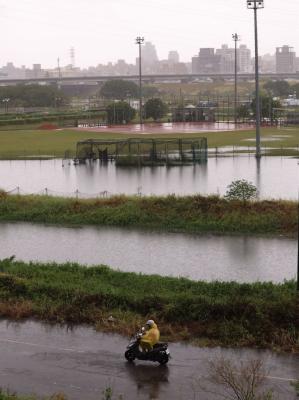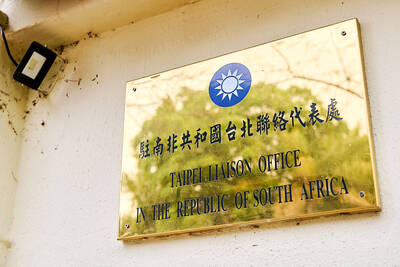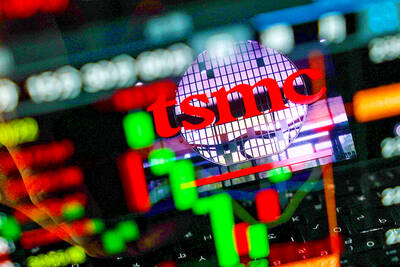The Sino-Japanese Treaty is a treaty verified by international law that clearly states that Taiwan was returned to the Republic of China (ROC), President Ma Ying-jeou (馬英九) said yesterday.
Ma made the remarks at an exhibition held by the Academia Historica and the Ministry of Foreign Affairs marking the 60th anniversary of the signing of the Sino-Japanese Treaty, also known as the Treaty of Taipei.
Ma said that according to the Cairo Declaration jointly issued by the ROC, the US and Britain on Dec. 1, 1943, Article 8 of the Potsdam Declaration, issued on July 26, 1945, and the Japanese Instrument of Surrender, all three stated clearly that after World War II, Japan agreed to return what was then known as Manchuria, including current-day Liaoning, Jilin and Heilongjiang provinces, Taiwan (Formosa), and Penghu (the Pescadores) to the ROC.
These three documents were made within the powers given to the leaders of state during wartime, so all promises listed therein are of course legally binding, he said.
The Treaty of Taipei was signed on April 28, 1952, in Taipei by the Republic of China (ROC) government and the government of Japan and went into effect on Aug. 5 the same year, ending the state of war between the two nations.
Ma said the treaty stated the “renouncement to all right, title and claim to Taiwan (Formosa) and Penghu (the Pescadores) as well as the Spratly Islands [Nansha Islands, 南沙群島] and the Paracel Islands [Xisha Islands, 西沙群島]” by the Japanese and that “all treaties, conventions and agreements concluded before Dec. 9, 1941, between Japan and China have become null and void as a consequence of the war.”
The statement that “nationals of the Republic of China shall be deemed to include all the inhabitants and former inhabitants of Taiwan (Formosa) and Penghu (the Pescadores) and their descendants who are of the Chinese nationality” also clearly represented the fact that Taiwan had been returned to the ROC, Ma said.
Mentioning the First Note of the treaty, which stated: “In -regard to the Treaty of Peace between Japan and the Republic of China signed this day ... the understanding reached ... shall, in respect of the Republic of China, be applicable to all the territories which are now, or which may hereafter be, under the control of its Government,” Ma said the treaty pertained to all territories that were and will be owned by the ROC, which, he added, includes Taiwan.
Separately yesterday, former representative to Japan Lo Fu-chen (羅福全) said Ma distorted the interpretation of the Sino-Japanese Treaty.
While Japan renounced territorial claims to Taiwan, Penghu, the Spratlys and the Paracels in the Treaty of San Francisco, Taiwan’s status after World War II remains undetermined as it did not state which country Taiwan belonged to, Lo said.
Noting Ma had said during his 2008 presidential campaign that “Taiwan’s future should be determined by the 23 million Taiwanese,” Lo said it suggested the president supported Taiwan’s undetermined status theory.
Additional reporting by Chris Wang

Taipei, New Taipei City, Keelung and Taoyuan would issue a decision at 8pm on whether to cancel work and school tomorrow due to forecasted heavy rain, Keelung Mayor Hsieh Kuo-liang (謝國樑) said today. Hsieh told reporters that absent some pressing reason, the four northern cities would announce the decision jointly at 8pm. Keelung is expected to receive between 300mm and 490mm of rain in the period from 2pm today through 2pm tomorrow, Central Weather Administration data showed. Keelung City Government regulations stipulate that school and work can be canceled if rain totals in mountainous or low-elevation areas are forecast to exceed 350mm in

EVA Airways president Sun Chia-ming (孫嘉明) and other senior executives yesterday bowed in apology over the death of a flight attendant, saying the company has begun improving its health-reporting, review and work coordination mechanisms. “We promise to handle this matter with the utmost responsibility to ensure safer and healthier working conditions for all EVA Air employees,” Sun said. The flight attendant, a woman surnamed Sun (孫), died on Friday last week of undisclosed causes shortly after returning from a work assignment in Milan, Italy, the airline said. Chinese-language media reported that the woman fell ill working on a Taipei-to-Milan flight on Sept. 22

COUNTERMEASURE: Taiwan was to implement controls for 47 tech products bound for South Africa after the latter downgraded and renamed Taipei’s ‘de facto’ offices The Ministry of Foreign Affairs is still reviewing a new agreement proposed by the South African government last month to regulate the status of reciprocal representative offices, Minister of Foreign Affairs Lin Chia-lung (林佳龍) said yesterday. Asked about the latest developments in a year-long controversy over Taiwan’s de facto representative office in South Africa, Lin during a legislative session said that the ministry was consulting with legal experts on the proposed new agreement. While the new proposal offers Taiwan greater flexibility, the ministry does not find it acceptable, Lin said without elaborating. The ministry is still open to resuming retaliatory measures against South

1.4nm WAFERS: While TSMC is gearing up to expand its overseas production, it would also continue to invest in Taiwan, company chairman and CEO C.C. Wei said Taiwan Semiconductor Manufacturing Co (TSMC) has applied for permission to construct a new plant in the Central Taiwan Science Park (中部科學園區), which it would use for the production of new high-speed wafers, the National Science and Technology Council said yesterday. The council, which supervises three major science parks in Taiwan, confirmed that the Central Taiwan Science Park Bureau had received an application on Friday from TSMC, the world’s largest contract chipmaker, to commence work on the new A14 fab. A14 technology, a 1.4 nanometer (nm) process, is designed to drive artificial intelligence transformation by enabling faster computing and greater power